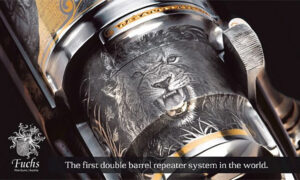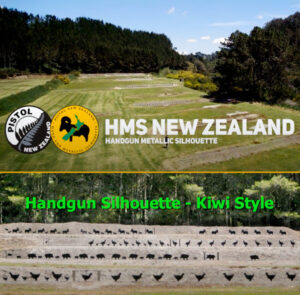Many shooters are aware that temperature changes can affect the performance of powders. You should keep loaded ammo out the sun and keep rounds in a hot chamber until you are ready to fire. There are other factors that must be considered, such as humidity. This article will explain how humidity can impact powder performance and burn rates. We all know the old saying, “Keep your powder dry.” Norma has shown that even the smallest environmental variations in humidity can have an impact on how powders burn. Sven-Eric Johansson is the head of ballistics at Nexplo/Bofors and provides a detailed discussion on water vapor absorption by powder in the Norma Reloading Manual. Johansson shows that different powders will burn at different rates depending upon their water content. Powders leave the factory with a 0.5 to 1.0% water content
Johansson explained that most powders contain 0.5-1% water by weight when they are manufactured. To maintain the 0.5-1% moisture content, the relative humidity is “equilibrated” at between 40-50% and 50% during manufacturing. Johansson points out that powder exposed for long periods to moist air will absorb water and cause it to burn slower. However, powder that has been stored in dry conditions for a long time will burn faster because of its lower moisture content. Johansson also found that single-base powders react more to relative humidity than double-base powders, which contain nitroglycerine. Tests show that water content has a significant impact on burn rates
Fred Barker’s review of the Norma Manual notes that Johansson provides twelve plots of the velocities, pressures and velocity of popular cartridges using Norma powders. These range from #200 to MRP. He also provides results for loaded.30-06 cartridges and.38 Special cartridges that were kept at relative humidity levels of 20% and 86% for 663 to 683 day. Johansson advises that powders be kept tightly sealed in their factory containers and that they should be minimized exposure to dry or moist air. Barker confirms Johansson’s findings that storage conditions can alter the burn rate. He says: “I have about 10 lbs of WWII 4831 powder that I have stored in dry (about 20% RH), Colorado air for over 60 years. It now burns approximately like IMR 3031.” First, all powders have a small but important amount of water. The powder’s water content will change depending on how it is stored. Third, the water content of your powder DOES impact how it burns, especially for single-base powders. A powder that has been recapped in the dry Southwest for a long time will likely behave differently than one that was recapped in the humid Southeast. These are important points to remember for reloaders. Johannson recommends that powders be kept tightly sealed when not dispensing charges. Powders should also be kept out of extreme dry and humid environments to preserve their “as manufactured” burn rate. MidwayUSA sells the Norma Reloading Manual for $24.99. Real-World Example — “Dry H4831sc Runs Hotter” Robert Whitley agrees with the fact that powder’s burn rate varies depending on how humid it absorbs. Robert writes: “I had an eight-lb. I kept the jug of H4831SC in my detached garage because it can get humid there. This was 43.5-44.0 grams and was very accurate with the 115 Bergers from my 6mm Super X. After a few weeks, I took the jug and kept it in my detached garage. After a few weeks, I loaded up 43.5g and went to a match. It shot terrible. I was unable to figure out why it was happening until I checked the chronograph again. I found that the load was moving a lot faster than normal and was out of the “sweet spot”. (42.5 – 43.0 grams was the maximum I could load and keep it accurate in humid air). After a few weeks, I returned to the garage and now it shoots great. This has happened with other powders.”

















